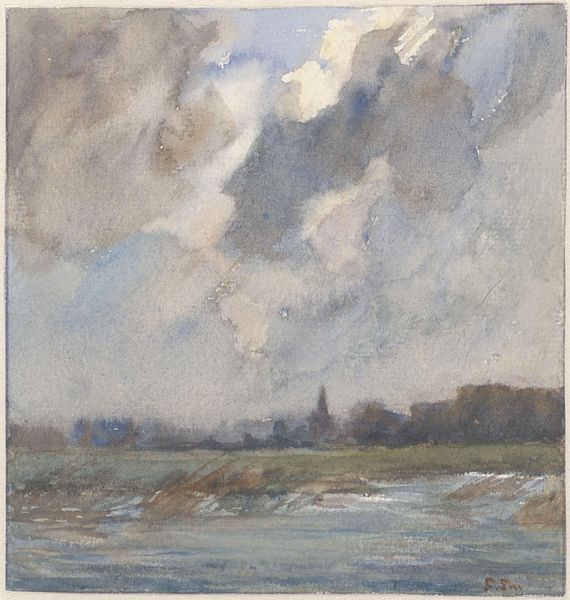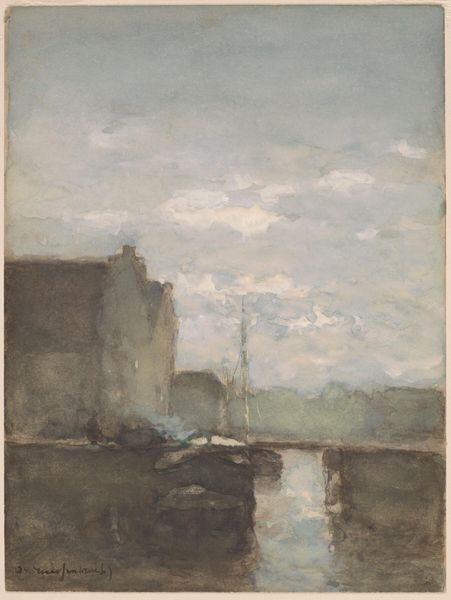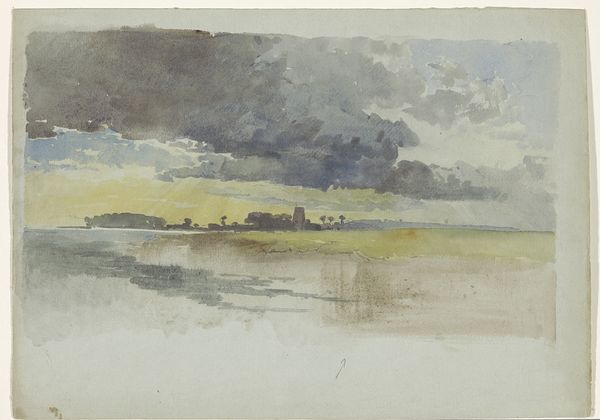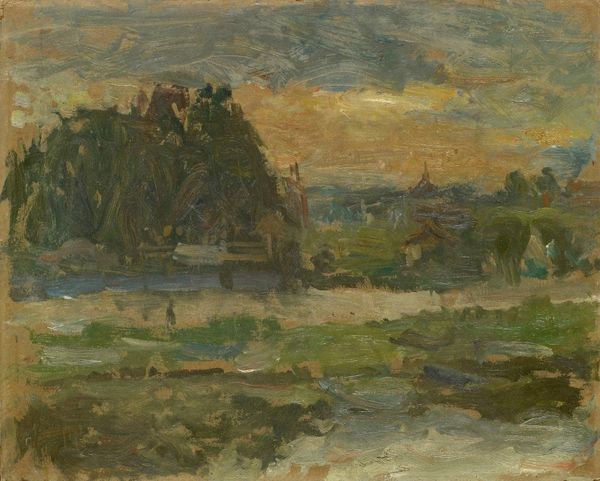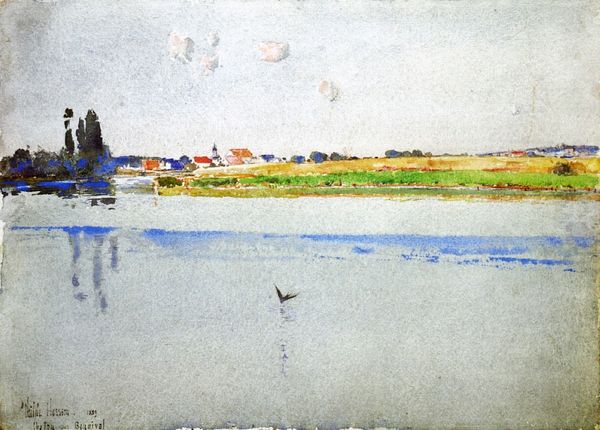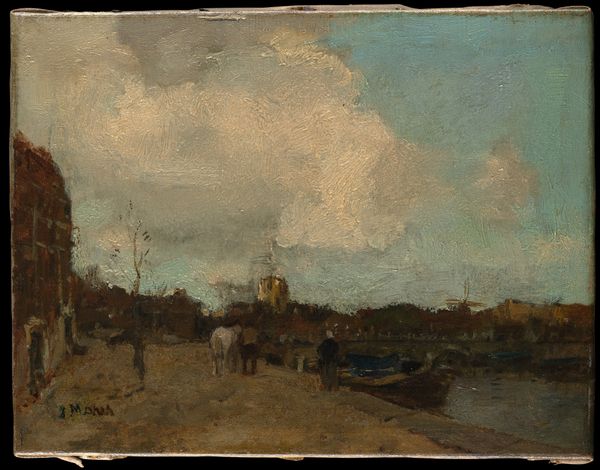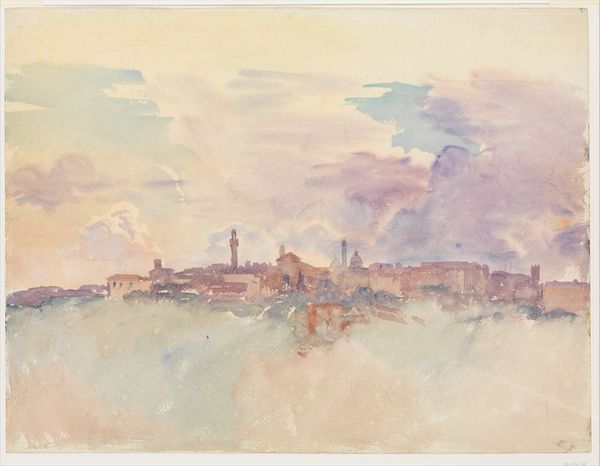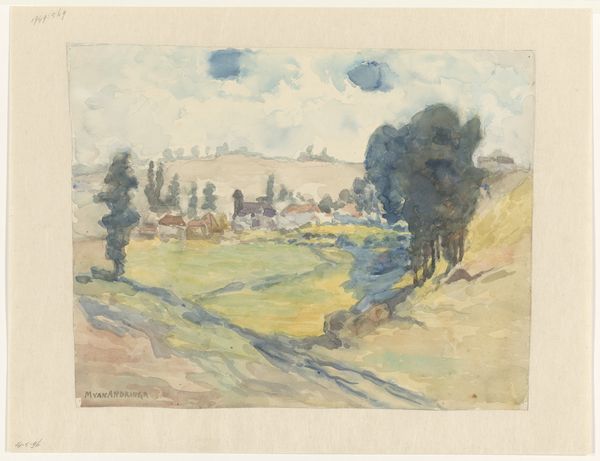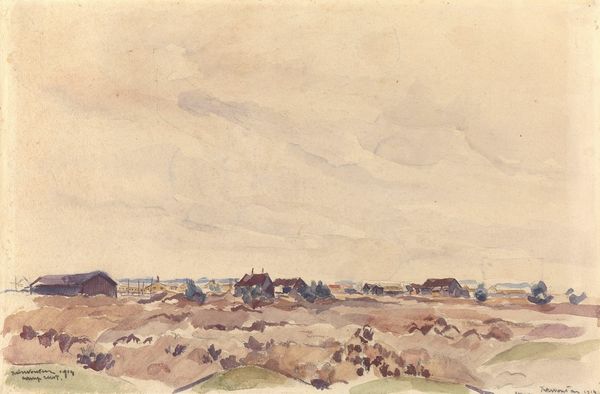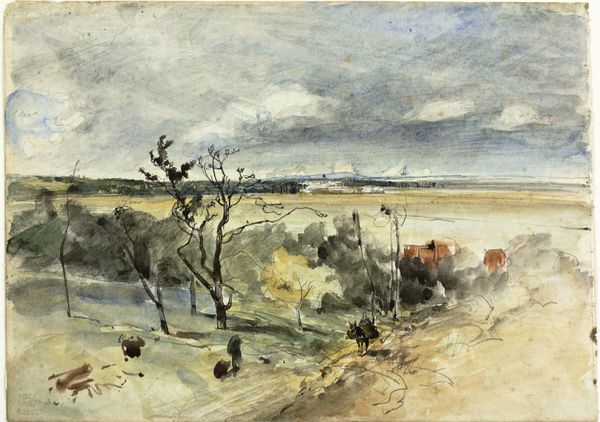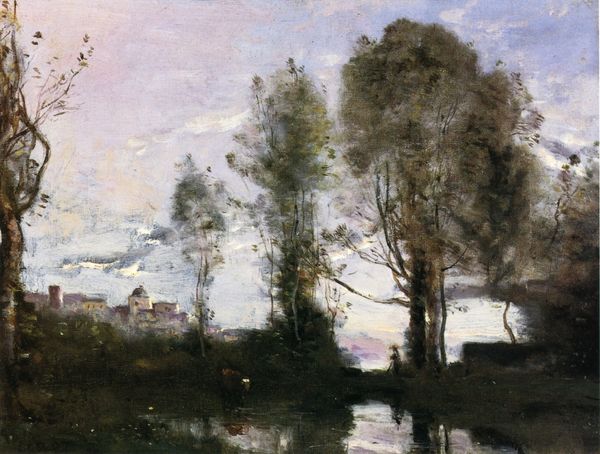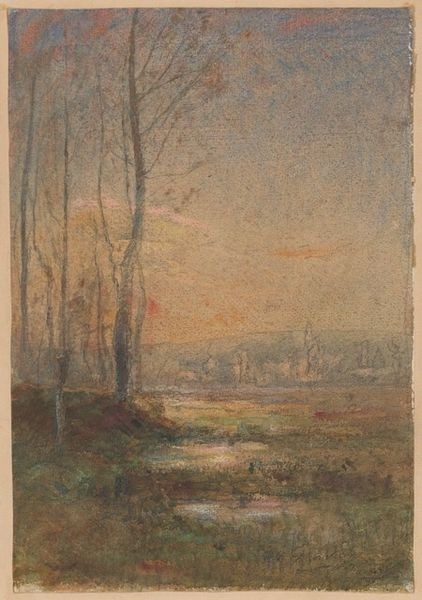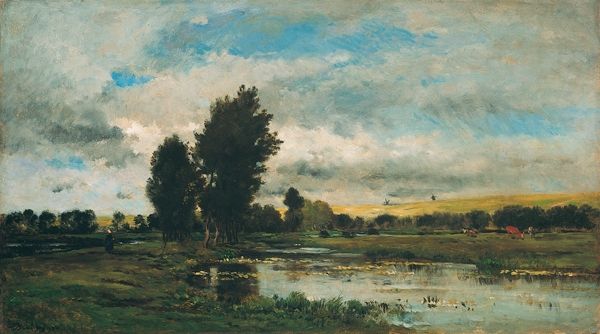
Dimensions: 28.7 x 29.5 cm
Copyright: Public domain
Editor: This is Andreas Achenbach's "View of Neuss," created in 1865 using, it looks like, watercolor and oil – quite the combination. I’m immediately struck by the atmospheric quality, it's quite moody, don’t you think? I wonder, what is your take on it? Curator: "Moody" is the perfect word. It's a hazy memory of a place. Achenbach captures something beyond just the scenery, a feeling, almost. Notice how the buildings in the city blur with the treeline, it all kind of melts together. What do you think he's trying to convey by letting everything bleed together? Editor: Perhaps a sense of impermanence? Like the city is dissolving back into nature, a cycle. It’s definitely not the crisp realism you see in some landscapes. It is somehow nostalgic. Curator: Nostalgia's a great angle. Think of Romanticism's focus on emotion and the sublime, which often gets translated into this pining for what's lost, or what’s just beyond our grasp. Achenbach, here, mixes it with realism – like he's grounding that yearning in a tangible, observable place, but letting it get swallowed up in feeling. Look at how free he is with the washes of colour! Does that resonate with you? Editor: It does! I like how the looseness in his brushstrokes mirrors the fleeting nature of memory itself. There’s a rawness. It isn’t trying too hard, it feels more intuitive. The painting now feels deeper to me. Curator: Yes, I agree completely. It makes you wonder what the personal connection was with Neuss; he truly manages to weave a feeling. Editor: It makes me want to pick up my own watercolors and capture how *I* see my neighborhood! Curator: Then his mission is complete, inspiring us a century and a half later!
Comments
No comments
Be the first to comment and join the conversation on the ultimate creative platform.
